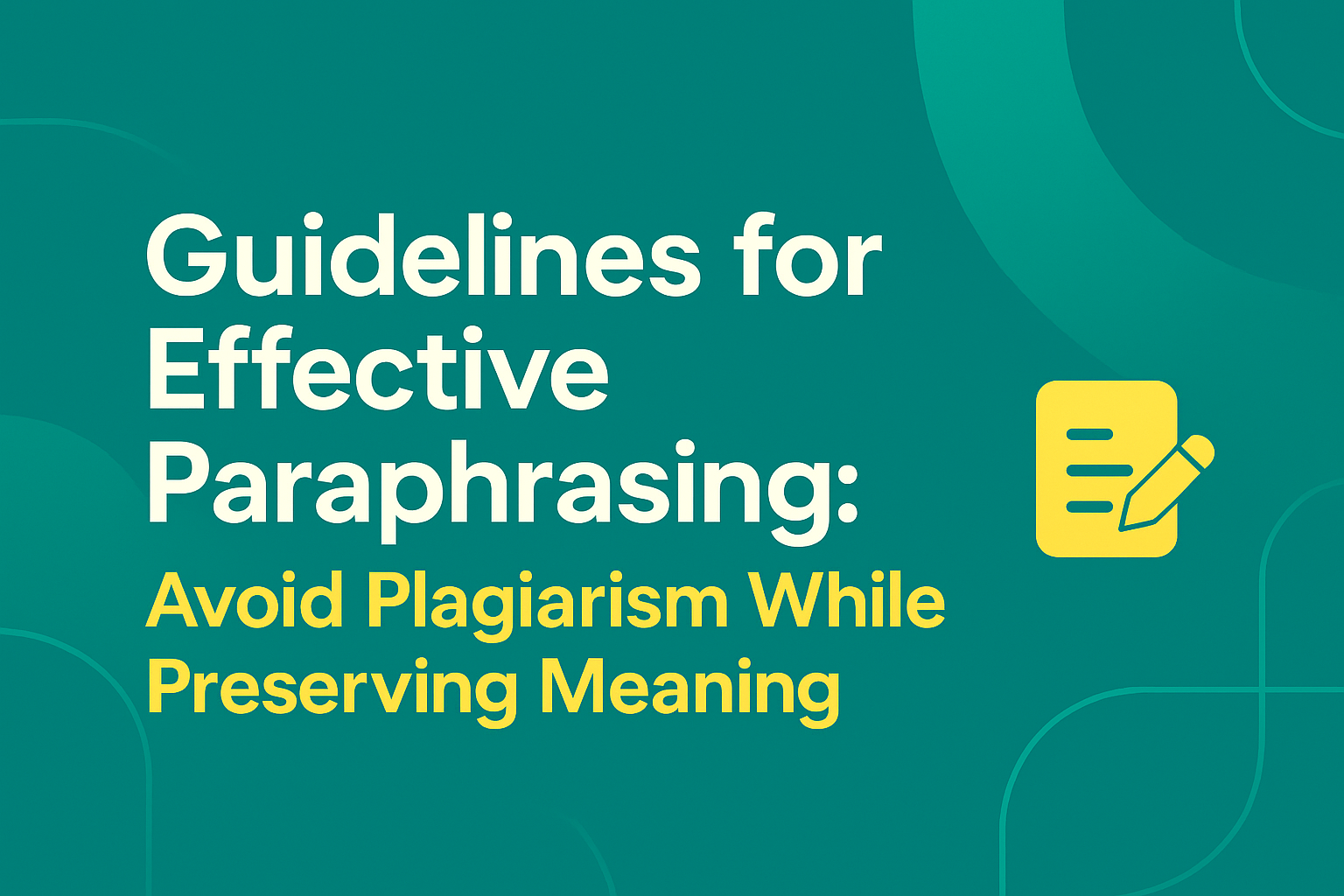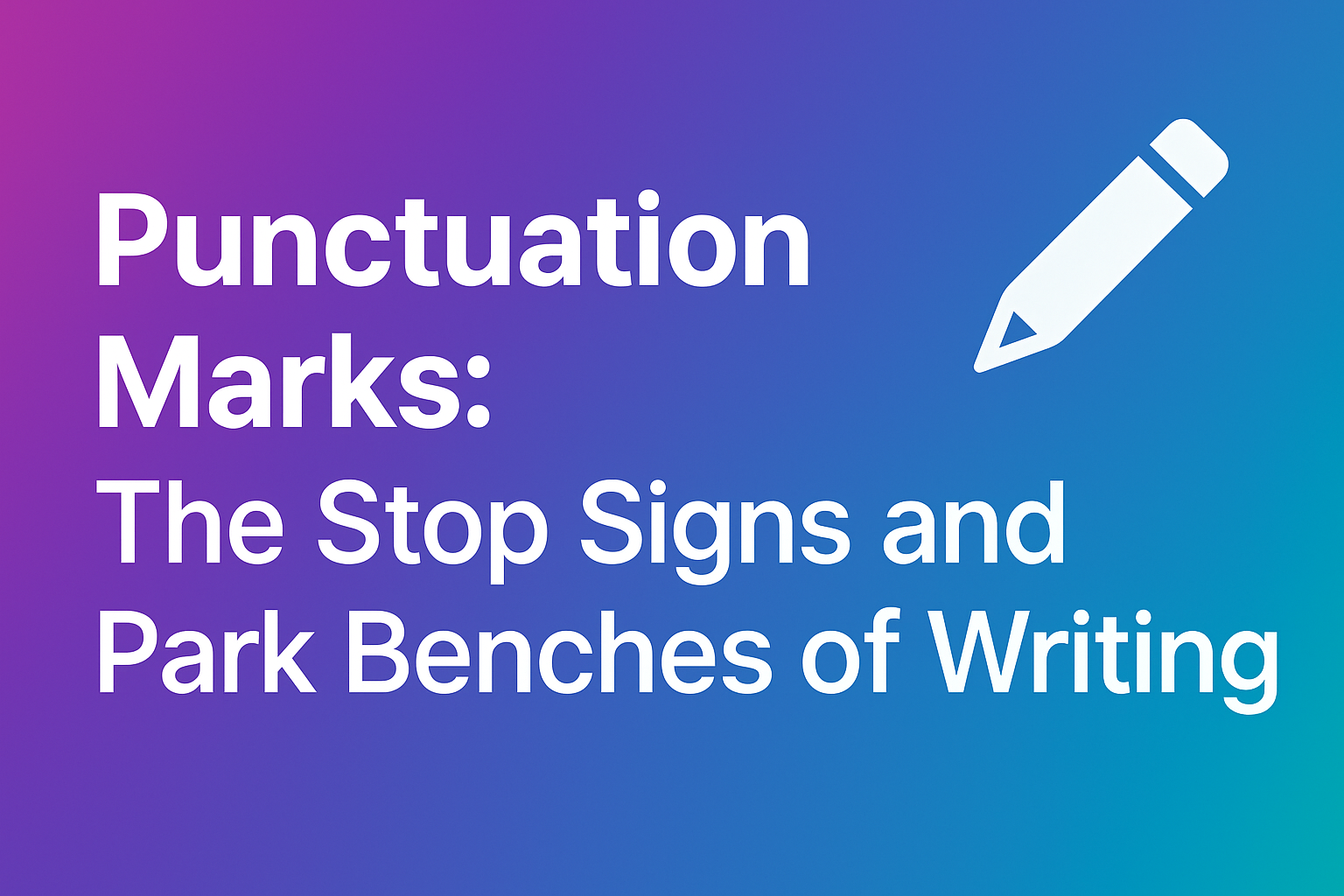
How to Cite Sources Like a Pro: A Comprehensive Guide
Master the art of citing sources with this comprehensive guide covering various citation styles, common mistakes to avoid, and best practices for academic and professional writing.
Read articleCheck your papers for plagiarism with our advanced AI tools


Paraphrasing is an essential skill for students, researchers, and content creators. When done correctly, it allows you to incorporate others' ideas into your work while maintaining originality and avoiding plagiarism. However, many struggle with paraphrasing effectively, either creating content too similar to the original or distorting the original meaning. This guide outlines key principles and techniques for successful paraphrasing.
Paraphrasing is restating someone else's ideas in your own words while preserving the original meaning. Unlike direct quotations, which use the exact words of the source within quotation marks, paraphrasing allows you to integrate source material seamlessly into your own writing style.
Effective paraphrasing is not:
There are several benefits to paraphrasing rather than quoting directly:
Follow these steps for effective paraphrasing:
Read the original passage several times until you fully comprehend its meaning. If you don't understand the original, you cannot paraphrase it accurately.
Close the source material or put it out of sight. This forces you to rely on your understanding rather than the original wording.
Write the idea in your own words as if you were explaining it to someone unfamiliar with the topic.
As you write, make sure to record the source information for proper citation later. Even paraphrased information must be cited.
Return to the original and compare your paraphrase. Check for:
Make adjustments to ensure your paraphrase is both original and accurate.
One of the most effective ways to paraphrase is to change how information is presented:
Original: "The researchers conducted three experiments to test the hypothesis, each showing increasingly significant results that supported their initial theory."
Paraphrase: "A series of three experimental trials provided growing evidence in favor of the hypothesis that the research team had formulated."
Transform nouns into verbs, adjectives into adverbs, etc.
Original: "The implementation of the new policy resulted in dramatic improvement in employee satisfaction."
Paraphrase: "After implementing the new policy, employees were dramatically more satisfied."
Present numerical information in alternative but equivalent ways.
Original: "87% of participants reported improved symptoms after treatment."
Paraphrase: "The treatment improved symptoms in more than eight out of ten participants."
While synonym substitution alone is not sufficient for paraphrasing, thoughtful word choice is important:
Original: "The economic downturn severely impacted small businesses in the region."
Paraphrase: "Small enterprises throughout the area suffered considerable hardship during the financial recession."
Important: Technical terms, proper nouns, and domain-specific vocabulary often do not have adequate synonyms and should be kept the same.
Patchwriting is taking portions of the original text and "patching" them together with some words changed. This is considered a form of plagiarism.
Original: "The neural mechanisms underlying facial recognition are complex and involve multiple brain regions working in coordination."
Patchwriting: "The neural processes underlying facial recognition are complicated and involve several brain regions working together."
Proper Paraphrase: "Recognizing faces requires the coordinated activity of various parts of the brain through sophisticated neural pathways."
Merely rearranging the sentence structure without changing the vocabulary is insufficient.
Original: "The president announced the new initiative at yesterday's press conference."
Poor Paraphrase: "At yesterday's press conference, the new initiative was announced by the president."
Better Paraphrase: "During media briefing held the previous day, the head of state unveiled the fresh program."
In attempting to use different words, it's easy to unintentionally change the meaning of the original.
Original: "The study suggests a correlation between exercise and reduced anxiety levels."
Distorted Paraphrase: "The research proves that exercise causes anxiety to decrease."
Accurate Paraphrase: "According to the research, people who exercise may experience lower levels of anxiety, though a causal relationship wasn't established."
Even when paraphrasing, you must cite your sources. Remember:
The specific format depends on your citation style, but generally includes:
Various digital tools claim to help with paraphrasing, but be wary:
If you use such tools, always:
Original: "The hippocampus plays a crucial role in the formation of new memories, particularly those involving spatial navigation and autobiographical events. Damage to this structure often results in anterograde amnesia, characterized by an inability to form new declarative memories."
Paraphrase: "New memories, especially those related to navigating environments and personal experiences, rely heavily on hippocampal function. When this brain region is injured, patients typically develop anterograde amnesia—a condition where creating new explicit memories becomes impossible."
Original: "Recent climate models indicate that global temperatures could rise by 2.7°F (1.5°C) above pre-industrial levels as early as 2030, potentially triggering severe weather events, rising sea levels, and disruptions to agriculture worldwide."
Paraphrase: "According to current climate projections, the earth might warm by 1.5 degrees Celsius compared to pre-industrial times within the next decade. This warming could cause worldwide agricultural problems, higher oceans, and extreme weather phenomena."
Effective paraphrasing is a skill developed through practice. By following these guidelines and techniques, you can ethically incorporate others' ideas while maintaining your academic integrity and developing your own voice as a writer. Remember that paraphrasing is not about avoiding citation, but about integrating source material smoothly and demonstrating your understanding of the content.
The next time you need to reference someone else's work, take the time to paraphrase properly. Your writing will be stronger, your arguments more cohesive, and your academic or professional reputation preserved.

Master the art of citing sources with this comprehensive guide covering various citation styles, common mistakes to avoid, and best practices for academic and professional writing.
Read article
Master the art of proofreading with these three essential steps that will help you catch errors and polish your text to perfection.
Read article
Discover how proper punctuation serves as the essential traffic signals of written communication, guiding readers through your ideas with clarity and precision.
Read article